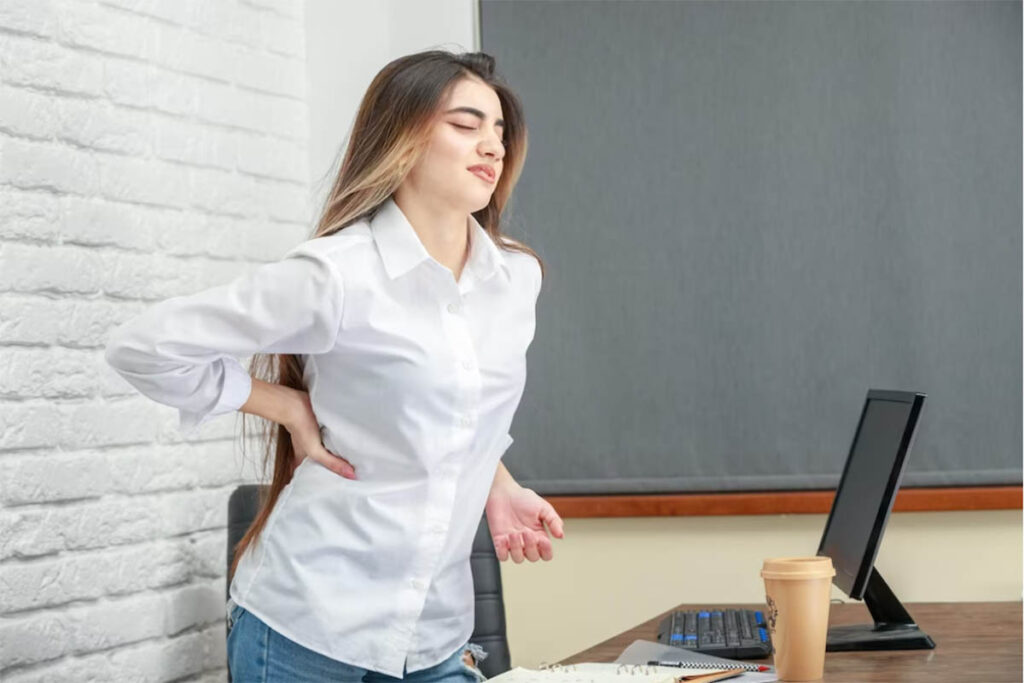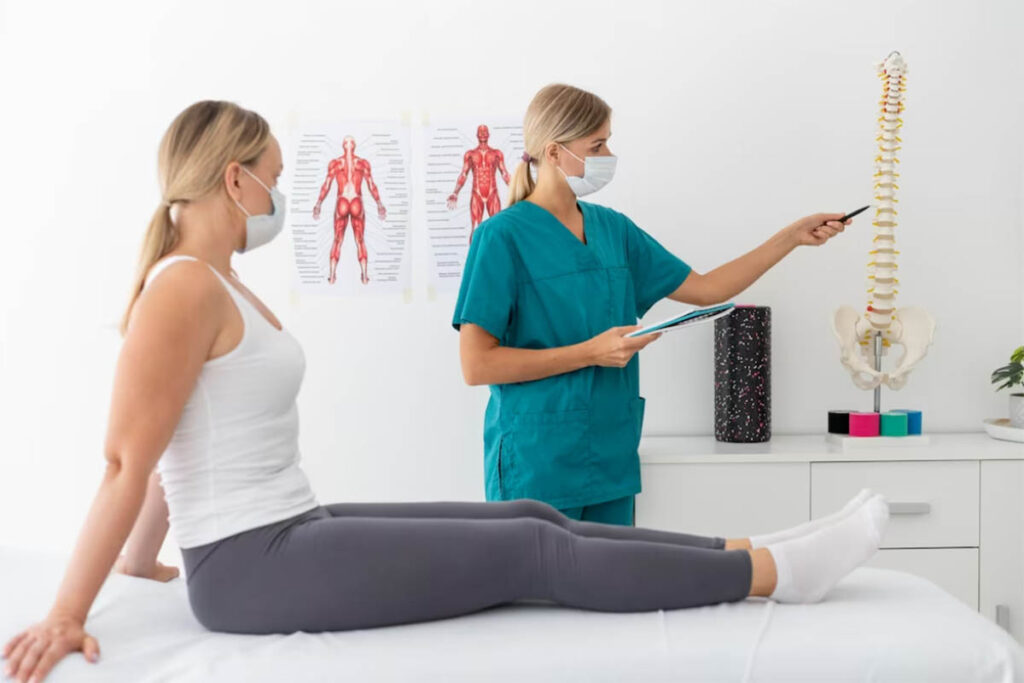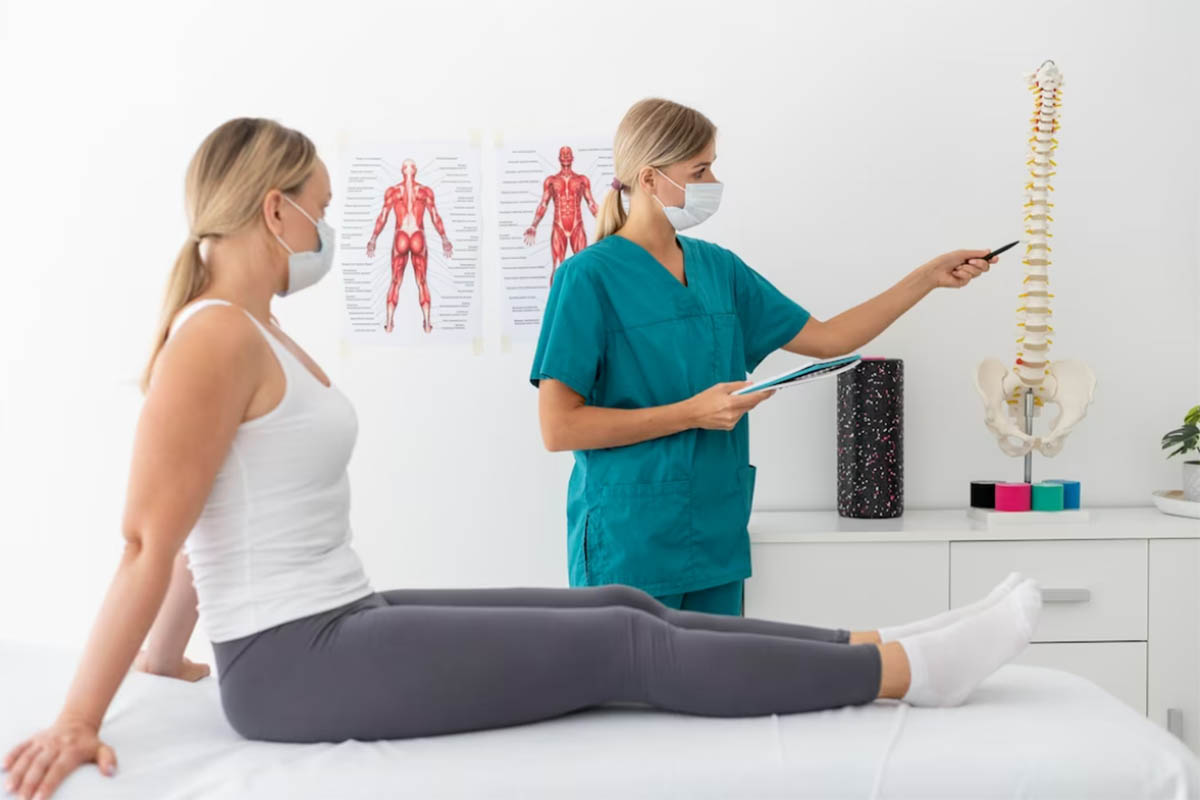Introduction
The lower spine, also known as the lumbar spine, is a crucial part of the human body’s structural framework. It supports the upper body’s weight, facilitates movement, and protects the delicate spinal cord and nerve roots. However, this complex region is prone to various issues that can lead to pain and discomfort. In this comprehensive 3000-word article, we will explore the anatomy of the lower spine, common lower back issues, and effective relief strategies. Whether you’re seeking knowledge about the lower spine or looking for ways to alleviate lower back pain, this guide will empower you on your journey to a healthier and pain-free life.
Table of Contents
- Anatomy of the Lower Spine
- Common Lower Spine Issues
- a. Lumbar Strain
- b. Herniated Disc
- c. Degenerative Disc Disease
- d. Spinal Stenosis
- e. Sciatica
- f. Spondylolisthesis
- Symptoms of Lower Spine Issues
- Diagnosing Lower Spine Problems
- Treatment Options for Lower Spine Pain
- a. Rest and Activity Modification
- b. Pain Relief Medications
- c. Physical Therapy and Exercise
- d. Heat and Cold Therapy
- e. Epidural Steroid Injections
- f. Spinal Decompression Therapy
- g. Minimally Invasive Surgery
- Preventing Lower Spine Issues
- Frequently Asked Questions (FAQs)
- Conclusion
1. Anatomy of the Lower Spine
The lower spine is composed of five vertebrae (L1-L5) situated between the thoracic spine (mid-back) and the sacrum (pelvis). The lumbar vertebrae are larger and more robust than those in other regions of the spine, as they bear the weight of the upper body and provide flexibility for bending and twisting motions. The lower spine also houses the intervertebral discs, which act as shock absorbers between the vertebrae, and the spinal cord’s nerve roots that extend through the spinal canal.
2. Common Lower Spine Issues

The lower spine is susceptible to various issues due to its constant use and support of the upper body. Some common lower spine problems include:
a. Lumbar Strain
Lumbar strain refers to the overstretching or tearing of muscles and tendons in the lower back. It often occurs due to improper lifting, sudden movements, or muscle imbalances.
b. Herniated Disc
A herniated disc, also known as a slipped or ruptured disc, happens when the inner gel-like material of an intervertebral disc leaks through its tough outer layer. This can irritate nearby nerves and cause pain and discomfort.
c. Degenerative Disc Disease
Degenerative disc disease is a natural part of aging, where the intervertebral discs lose water content and height over time. As the discs degenerate, they may lose their ability to cushion the vertebrae effectively, leading to pain and stiffness.
d. Spinal Stenosis
Spinal stenosis occurs when the spinal canal narrows, putting pressure on the spinal cord and nerve roots. This narrowing can result from bone spurs or thickened ligaments, leading to pain, numbness, and weakness in the legs.
e. Sciatica
Sciatica is a condition characterized by pain that radiates along the sciatic nerve, which extends from the lower back through the hips and buttocks and down each leg. It is often caused by compression of the nerve roots.
f. Spondylolisthesis
Spondylolisthesis occurs when a vertebra slips forward over the one below it, often due to a stress fracture in the pars interarticularis (a small bridge of bone connecting the facet joints).
3. Symptoms of Lower Spine Issues
Lower spine issues can present a range of symptoms, depending on the underlying condition. Common symptoms include:
- Lower Back Pain: Dull, aching, or sharp pain in the lower back region.
- Leg Pain: Pain, numbness, or tingling that radiates down one or both legs, following the path of the affected nerve.
- Muscle Weakness: Weakening of leg muscles, resulting in difficulty standing or walking.
- Stiffness: Reduced range of motion and flexibility in the lower back.
- Numbness or Tingling: Sensations of numbness or tingling in the lower back or legs.
4. Diagnosing Lower Spine Problems
Accurate diagnosis of lower spine issues is essential for effective treatment. Healthcare providers, such as orthopedic specialists or spine surgeons, will typically perform:
- Medical History: Gathering information about symptoms, medical history, and any recent injuries.
- Physical Examination: A thorough examination to assess range of motion, reflexes, and muscle strength.
- Imaging Tests: X-rays, MRI scans, or CT scans may be ordered to get detailed images of the lower spine and identify structural abnormalities.
- Electromyography (EMG): EMG measures electrical activity in muscles and can help identify nerve compression or damage.
5. Treatment Options for Lower Spine Pain

Treatment for lower spine pain depends on the specific condition and its severity. Some common treatment options include:
a. Rest and Activity Modification
In mild cases, rest and avoiding activities that exacerbate pain can help promote healing.
b. Pain Relief Medications
Over-the-counter pain relievers like nonsteroidal anti-inflammatory drugs (NSAIDs) can help manage mild to moderate pain and inflammation.
c. Physical Therapy and Exercise
A physical therapist can design a customized exercise program to improve flexibility, strength, and stability in the lower back.
d. Heat and Cold Therapy
Applying heat or cold packs to the affected area can help reduce pain and inflammation.
e. Epidural Steroid Injections
For conditions like herniated discs or spinal stenosis, corticosteroid injections may be administered to reduce inflammation and provide pain relief.
f. Spinal Decompression Therapy
Spinal decompression therapy, using traction or decompression machines, can alleviate pressure on the spinal discs and nerves.
g. Minimally Invasive Surgery
In severe cases or when conservative treatments fail to provide relief, minimally invasive surgical options may be considered to address the underlying issue.
6. Natural Remedies for Hand Pain Relief
In addition to medical treatments, several natural remedies can complement the management of lower spine pain:
a. Heat and Cold Therapy
Applying a warm compress or ice pack to the affected area can help reduce inflammation and alleviate pain.
b. Hand Stretches and Exercises
Gentle hand stretches and exercises can improve flexibility and promote blood circulation to the affected area.
c. Prevention
1) Maintain a Healthy Weight
Excess weight places additional strain on the lower spine, increasing the risk of developing back pain and conditions like herniated discs. Adopting a healthy diet and engaging in regular exercise can help maintain an optimal weight and reduce stress on the lower back.
2) Adopt Proper Posture
Maintaining good posture is crucial for preventing lower spine issues. When sitting, ensure that your feet are flat on the floor, and your back is supported. When standing, distribute your weight evenly on both feet and avoid slouching.
3) Engage in Regular Exercise
Regular exercise, especially activities that strengthen the core muscles, can help support the lower spine and improve stability. Low-impact exercises like walking, swimming, and yoga are excellent choices for promoting spinal health.
4) Lift Properly
Improper lifting techniques can strain the lower back and lead to injuries. When lifting heavy objects, bend your knees, keep the object close to your body, and use your leg muscles to lift, rather than relying on your back.
5) Use Ergonomic Furniture
Invest in ergonomic furniture, such as an adjustable chair and a supportive mattress, to ensure proper alignment and reduce pressure on the lower spine during extended periods of sitting and sleeping.
6) Avoid Prolonged Sitting
Sitting for long periods can put a significant amount of pressure on the lower spine. Take regular breaks to stand, stretch, and walk around, especially if you have a sedentary job.
7) Quit Smoking
Smoking can impair blood flow and nutrient delivery to the spinal discs, increasing the risk of degenerative disc disease. Quitting smoking can promote better spinal health and overall well-being.
8) Stay Hydrated
Staying hydrated is essential for maintaining the health of spinal discs, which rely on water to maintain their flexibility and shock-absorbing properties.
7. Frequently Asked Questions (FAQs)
1. Can lower spine issues be hereditary?
While lifestyle factors play a significant role in the development of lower spine issues, there can be a genetic component as well. Some individuals may have a family history of certain spine conditions, such as degenerative disc disease, which can increase their risk.
2. Are there specific exercises to strengthen the lower spine?
Yes, there are several exercises that can help strengthen the lower back and support the spine. Examples include bridges, pelvic tilts, and bird-dog exercises. However, it’s essential to consult with a healthcare provider or a qualified fitness professional before starting any exercise program, especially if you have existing back issues.
3. How do I know if my posture is affecting my lower spine?
Poor posture can put additional strain on the lower spine and lead to discomfort. If you frequently experience back pain, stiffness, or muscle tension, it could be a sign that your posture is contributing to the issue. Working on improving your posture through exercises and mindfulness can help alleviate these symptoms.
4. Can stress contribute to lower spine issues?
Yes, stress and tension can manifest in the form of muscle tightness in the lower back, leading to pain and discomfort. Practicing stress-relief techniques, such as meditation, yoga, or deep breathing exercises, can be beneficial for both your mental well-being and your lower spine health.
5. How often should I perform exercises to prevent lower spine issues?
The frequency of exercises depends on your individual needs and fitness level. Generally, performing core-strengthening exercises two to three times per week can be beneficial for preventing lower spine issues. However, it’s essential to listen to your body and avoid overexertion.
Conclusion
Preventing lower spine issues is within your control with the implementation of simple yet effective lifestyle changes. Maintaining a healthy weight, practicing good posture, exercising regularly, and taking breaks from prolonged sitting are crucial for preserving spinal health. Additionally, paying attention to ergonomics, quitting smoking, and staying hydrated are essential components of a proactive approach to lower spine care. By adopting these preventive measures, you can enjoy a healthier back and lead a more active and pain-free life.



